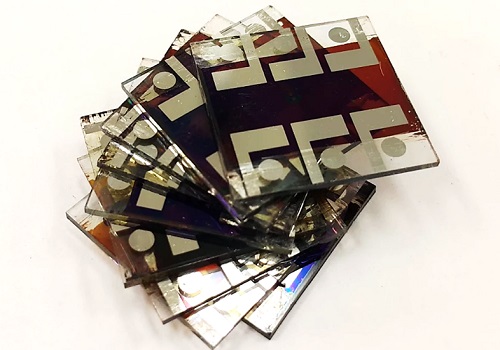Perovskite PV technology has made another small step forward, with the discovery of a new combination between perovskite and glycol, granting better control over the formation of the thin-film layer, by improving the structure and alignment of the perovskite grains.
Esma Ugur, a PhD student in the KAUST Solar Centre team that observed the effect iterated that “It yields more uniform thin films with improved structure and efficiency.”
Perovskite is a material added to solar panels as a thin layer on top of panels to harvest blue light wavelengths which complement the red energy traditionally harvested by regular panels.
This combination with glycol increases the reproducibility and efficiency of the perovskites so that they performed more efficiently in solar cell applications.
The procedure also operates at lower temperatures than previous alternatives, which could lead to cost reductions in manufacturing. However, the innovation remains challenged to adapt itself to commercial applications, where the instability of the perovskites are proving a hard challenge to overcome.
Popular content
Frédéric Laquai, leader of the KAUST Solar Centre team voiced the position of the firm going forward with this challenge “We have several groups in the KAUST Solar Centre working on that issue, and on other needs for future commercial development”
He highlighted that perovskites are a high priority research area for their R&D team, which has the potential to be used outside solar as well. “Perovskites have many interesting optical and electronic properties, which may make them useful for applications that we have not even thought about,”.
Laquai also was quick to emphasize the collaborative manner in which projects are directed at the KAUST solar centre, with the synergies between specialists from different field being a catalyst to the success of their research.
Author: Frederic Brown
This content is protected by copyright and may not be reused. If you want to cooperate with us and would like to reuse some of our content, please contact: editors@pv-magazine.com.


By submitting this form you agree to pv magazine using your data for the purposes of publishing your comment.
Your personal data will only be disclosed or otherwise transmitted to third parties for the purposes of spam filtering or if this is necessary for technical maintenance of the website. Any other transfer to third parties will not take place unless this is justified on the basis of applicable data protection regulations or if pv magazine is legally obliged to do so.
You may revoke this consent at any time with effect for the future, in which case your personal data will be deleted immediately. Otherwise, your data will be deleted if pv magazine has processed your request or the purpose of data storage is fulfilled.
Further information on data privacy can be found in our Data Protection Policy.